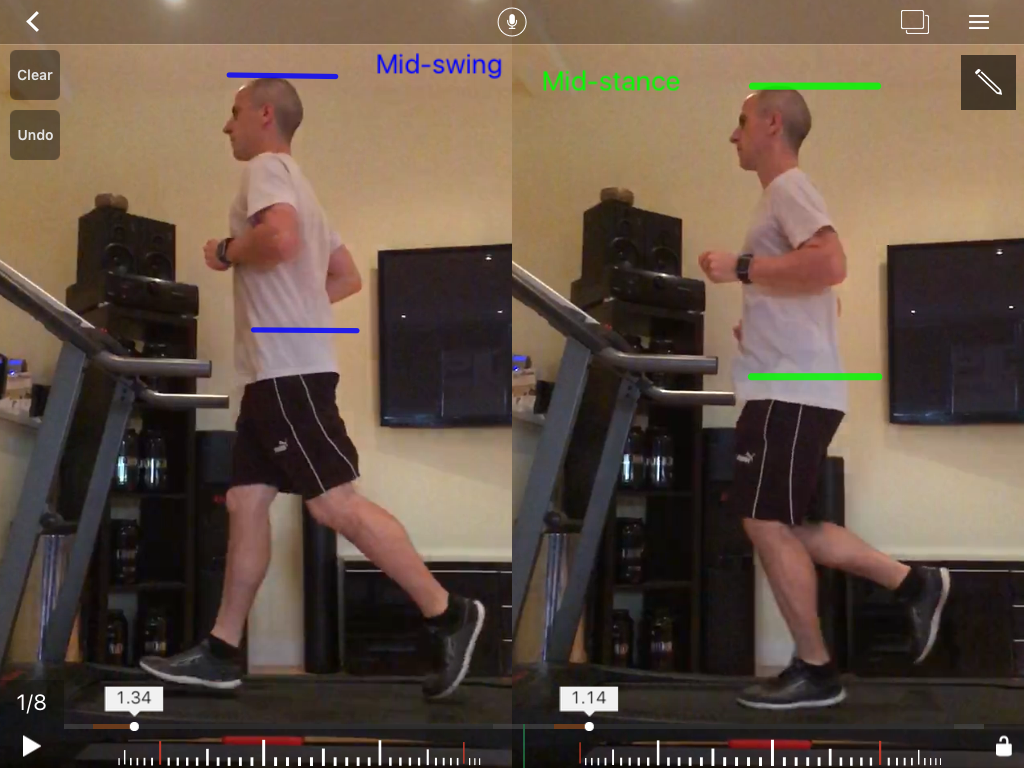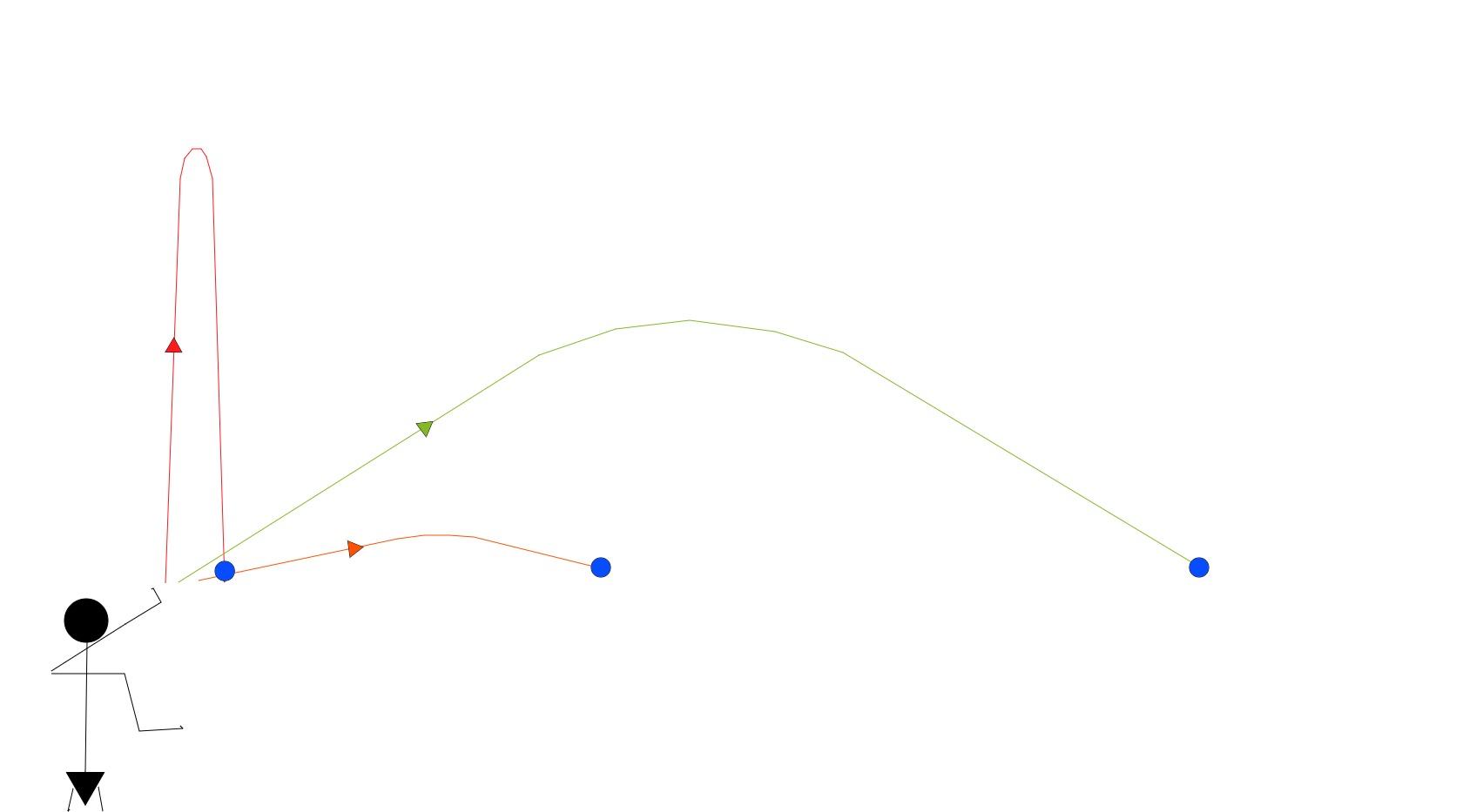Vertical Oscillation refers to how much you bob up and down when you run. If you’re bobbing up and down too much, you may be wasting vital energy jumping up in the air that you should be using to propel yourself forwards. This is going to affect your running performance. Read on to learn more about vertical oscillation and how you can manipulate it to improve your running technique.
What is Vertical Oscillation?
As we run, we hop from one foot to the other moving forwards. That hop has a horizontal component to it (how far we hop) and a vertical component (how high we hop). Vertical Oscillation refers to how big that vertical component is – i.e. how much we bob up and down as we run.
Vertical oscillation is a difficult thing to measure accurately in the clinic or at home. In a research setting the investigators will attach 3D motion detectors (like when they do CGI in the movies) and measure the vertical displacement of the centre of mass (near your pelvis). How far up and down the pelvis goes as we run determines the vertical displacement (same as vertical oscillation).
This is not practical for in the clinic so when I look at runners we just take a video and freeze frame at the highest and lowest parts of the running gait cycle. The lowest part is usually when one knee is passing the other, this is also known as mid-stance. The highest part is the middle point as we leap from one foot top the other, also known as mid-swing.

The difference between the two shows us our vertical displacement or vertical oscillation.

Is a High Vertical Oscillation Bad for Runners?
In 2016 Isabel Moore did an excellent review of the biomechanical factors affecting running economy (how efficiently we run). After reviewing the relevant research she concluded:
“Collectively, these results imply that reducing the magnitude of vertical displacement [vertical oscillation] should be encouraged. It is possible that reducing vertical displacement improves RE [running economy] by reducing the metabolic cost associated with supporting body weight” (Moore 2016).
In simple terms, bobbing up and down less could stop us wasting so much energy going up and down so we can use it to propel us forwards. I think of it like throwing a ball. If I am going to throw a ball as far as I possibly can I’m not going to throw it straight up in the air. I’m also not going to throw it dead flat. I’ll choose an angle that will get the ball to travel the furthest (prepare yourself for an incredible graphic to illustrate this point).

© Matthew Boyd 2017 – all rights reserved 🙂
The theory that bouncing up and down a lot (high vertical oscillation) is not a very good idea has been supported by other research looking at energy efficiency (Halvorsen 2012) as well as some of the research looking at whether barefoot running is more energy economical than shod running.
I’ve discussed previously the fact that shoe weight may be an important factor in running performance. However, the weight of the shoes is not the only thing that changes when you run barefoot, you also seem to reduce your vertical oscillation. Reducing your vertical oscillation may be an alternative explanation for some of the results that show barefoot running is more energy efficient than shod running (Moore 2013).
So is bouncing up and down a lot bad for runners or not?
There is only a little bit of research looking specifically at vertical oscillation. It is very difficult to isolate because other things like cadence and stride length tend to change as well if you reduce vertical oscillation. However, the little bit of data we have right now seems to suggest a higher vertical oscillation (bouncing up and down a lot) is bad for running economy (energy efficiency).
In summary, if you bounce up and down a lot when you run then you are wasting energy going up and down that you should be using to propel yourself forwards.
What should I do about it?
This is a tricky one. As I said, we don’t have a ton of data on vertical oscillation so there are no guidelines that I have found to say how much vertical oscillation is too much. In the clinic, I like to look at runners in real time and just ask myself “do they look like they are bouncing up and down too much?”. That’s a bit easier for me as I analyse running technique every day so I have a sample in my mind of hundreds of runners to give me some context. You don’t have that advantage so I would certainly encourage you to look at some other variables that might give you a clue as to whether your vertical oscillation may be too high.
If your vertical oscillation is really high, you are likely hitting the ground harder. This might make you feel like you are a ‘heavy’, ‘thudding’ or ‘stomping’ type runner. If so, check out my article Am I a Heavy Runner? That will give you some tips on how to reduce your impact and it will likely reduce your vertical oscillation at the same time.
The other variable that will influence vertical oscillation is cadence. I talk a lot about cadence. It’s the number of steps you take each minute. If you have a very high vertical oscillation you will be jumping quite high off the ground each step and that will mean you take longer to come down. This means you will be able to take less steps each minute and, therefore, have a lower cadence. If you’re not sure, check out my article How to Use Running Cadence to Avoid Injuries. That will tell you how to measure your cadence and how to fix it if it is too low. That will likely help you reduce your vertical oscillation if it is excessive.
If you are not a thudder and your cadence is appropriately high it is unlikely that your vertical oscillation will be too high. I have seen it before but it is rare and quite mild. I can’t really think of a way for you to determine this on your own but if you just feel like you’re bouncing up and down too much then it may be worth trying out a couple of running technique cues.
The first one to try is imagine that you have a very low ceiling just an inch above your head. Run while thinking of that for a couple of minutes. If possible, film yourself while running normally and then while thinking of the low ceiling so you can compare the two. If that cue does not work well for you another I’ve found helpful is don’t let your eyes bounce up and down so much. This one is a little more risky as sometimes runners do funky things with their neck while attempting it.
If you’re not sure, feel free to take a video of yourself running and send it to me. I’d be happy to take a look.
Questions? Let me know in the comments below.